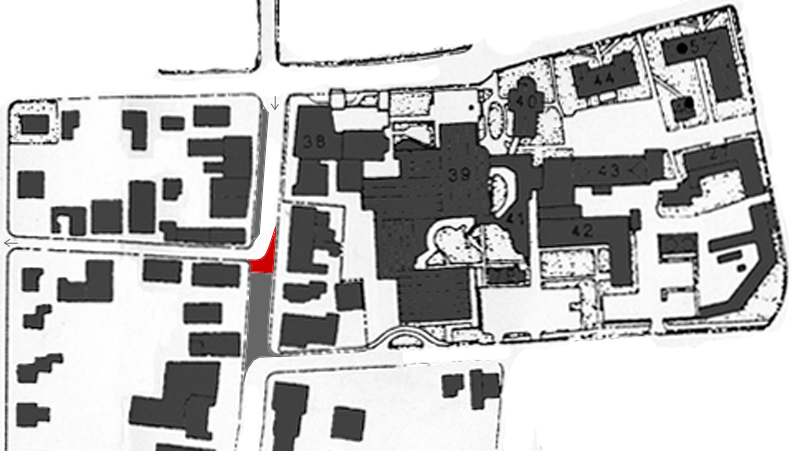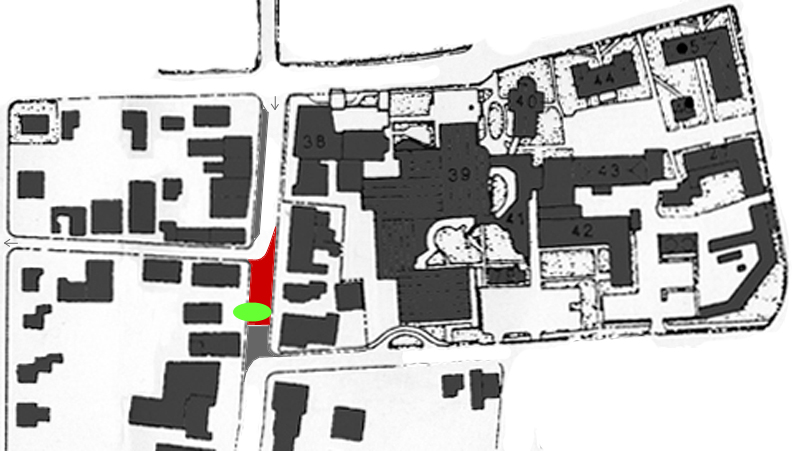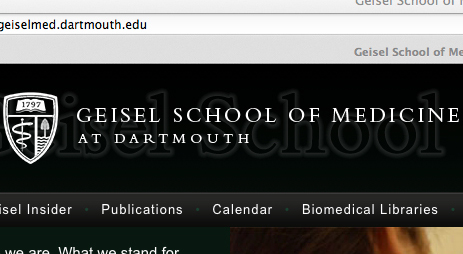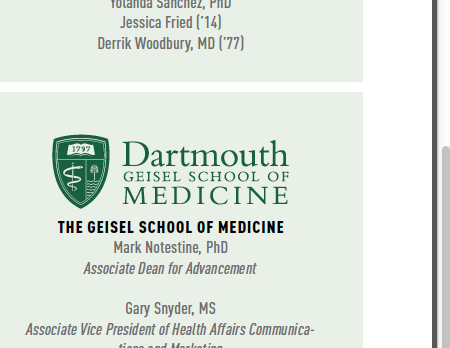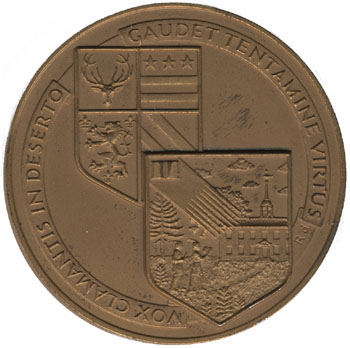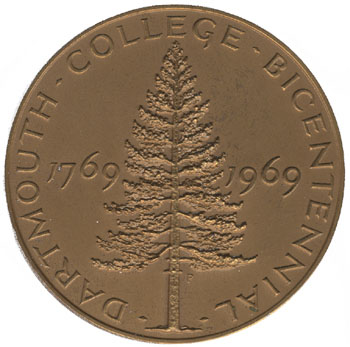1. The Lone Pine really is taking over from the 1940s-1950s shield as an emblem of official college-related things other than the board of trustees.
The pine is everywhere. For example, the Campus Police were represented by this patch but now Safety & Security are using this one. A van from Computing Services (now called ITS?) features a pine dissolving into pixels. Each of the new shields of Thayer School and Grad Studies has a pine. The new-ish DDS logo presents the Lone Pine as a giant piece of broccoli. Peak magazine (Winter 2015) even has an article on the phenomenon.
2. If the residential colleges adopt coats of arms, the collection of all six will look neat together. Here’s a collaged image of the carved and painted arms of the city of Dresden, flanked by those of the city’s districts, created to honor the 30th anniversary of the establishment of the DDR in 1979:

3. This is not directly related, but it’s worth remembering that a portion of the money that Wheelock used to establish Dartmouth came from Merton College, Oxford (Wiki; arms shown on 1264 Society page). The college is listed as having donated £2.2s.- to Moor’s Charity School during Occom’s and Whitaker’s 1766-1767 fundraising tour of England and Scotland (appendix to Wheelock’s 1769 Narrative in Google Books).
——–
Update 08.25.2015: Take a look at the Flag Project at the Florianopolis Design Biennale — a whole series of flags, each one representing the architectural features of a particular building.

